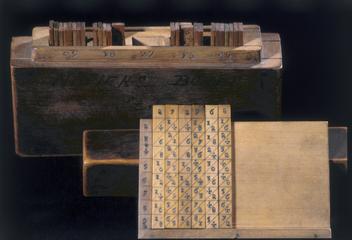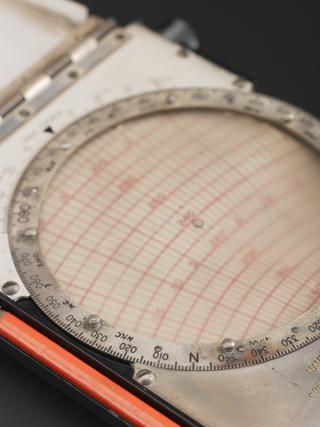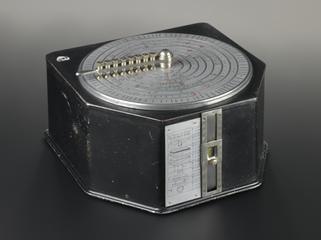
Semi-elliptic trammel by W.F. Stanley
- maker:
- William Ford Stanley
Semi-elliptic trammel by W.F. Stanley, London, 1876.
An ellipse is one of five possible types of shapes resulting from slicing a cone and its observation is connected to astronomy and German mathematician and astronomer Johannes Kepler’s ground-breaking discovery of the planetary elliptical orbits around the sun in the 1600s.
The W.F Stanley company supplied easy-to-operate both elliptic and semi-elliptic trammels for drawing ellipses from the 19th century to as late as 1960. Semi-elliptic trammels were often preferred to full trammels as they could draw much smaller ellipses, albeit in two halves. This example could draw semi-ellipses from 2 to 20 inches major axis. Another characteristic is that the long groove is in a plane below the short groove and along the front of the instrument so the slides can be made much longer allowing steadier working. Engineers and architects would use such instruments for their drawings of arches and bridges up until their replacement by computer programmes.
Details
- Category:
- Mathematics
- Object Number:
- 1876-661
- Materials:
- brass (copper, zinc alloy) and steel (metal)
- Measurements:
-
overall: 50 mm x 25 mm x 235 mm,
- type:
- curve drawing instruments and elliptic trammels
- credit:
- W.F. Stanley and Company




